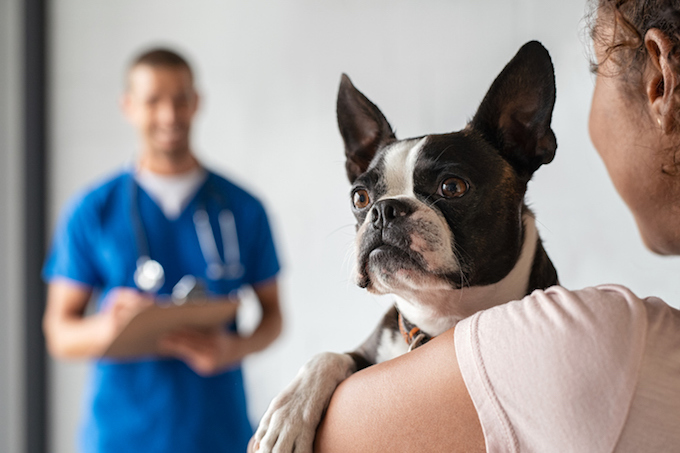Benign prostatic hyperplasia in dogs happens when the prostate gland becomes enlarged. The condition can cause problems when peeing.
Generally, the condition is shortened to BPH.
Also, the condition seems to affect older male dogs much more often than younger male pups.
Technically, the condition is also known as prostate disease in the breeding male dog.
If you see the signs of the condition in your dog, then get to a veterinarian for a proper diagnosis and treatment.
Here’s what you should know about the symptoms, causes, and treatments for the condition.
Symptoms of benign prostatic hyperplasia in dogs
The condition produces a small range of symptoms. For instance, some of the most common symptoms include:
- Pee with blood in it
- Straining to poop
- Semen with blood in it
- Walking in an abnormal way
- Walking with shorter steps
- Discharge
- Infection
- Pain
Causes of benign prostatic hyperplasia in dogs

The cause of the condition can be a few things. For example, some of the common causes of the condition include:
- Hormonal imbalance
- Enlarged prostate cells
- Increased prostate cells
Additionally, older male dogs seem to suffer from the condition more than younger pups.
Treatments for benign prostatic hyperplasia in dogs
Firstly, your vet will ask about your dog’s symptoms. Secondly, your vet will ask about your dog’s full medical history.
Thirdly, your vet will carry out a full rectal examination. Additionally, urine and semen samples can be taken and tested. Also, X-rays and ultrasounds can help to diagnose the condition.
Generally, treatment begins with medication. For example, finasteride is often prescribed. As always, if your vet prescribes your dog any medicine, make sure to stick to the correct dose and frequency instructions. Also, complete the full course of medicine.
However, castration is considered to be the most effective way to treat the condition.
While recovering at home, it is important to limit your dog’s exercise. Your vet can help suggest a safe level of exercise for your dog while they recover.
Finally, you can read more about enlarged prostate in dogs in general in our post here.
Have you ever cared for a dog who suffered from this condition? How did your vet help your dog recover? Let us know in the comments section below.









